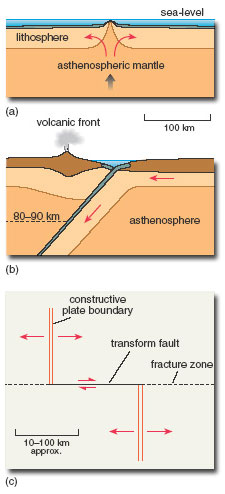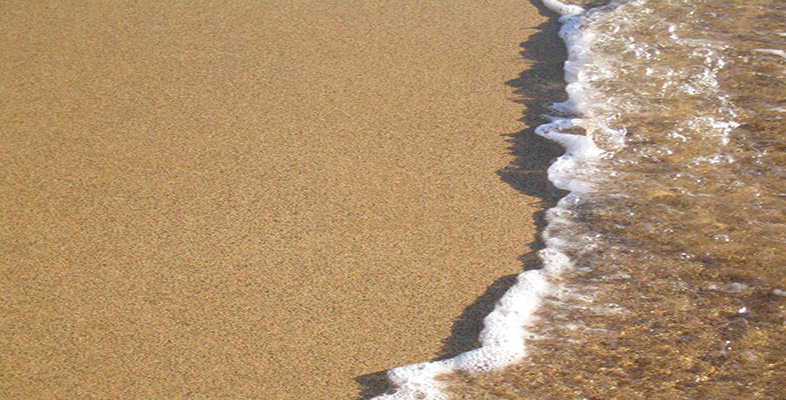4 Plate tectonics reviewed
4.1 Introduction
In the theory of plate tectonics there are three main types of plate boundary, namely: constructive, destructive and conservative plate boundaries.

Constructive plate margins occur as the result of lithospheric extension (Figure 5a). As the plates are pulled apart, buoyant mantle wells upwards to prevent a gap from opening. The upwelling mantle undergoes partial melting to form oceanic crustal material.
Destructive plate margins form where two plates collide. The more dense plate is subducted below the other, where it is eventually reclaimed by the mantle asthenosphere (Figure 5b). The location of destructive plate margins is marked by a volcanic arc on the overriding plate, which forms above the point at which partial melting commences. Much of the partial melting is triggered in the mantle wedge by the release of fluids from the subducting slab.
When two plates slide past each other without creating or destroying crustal material, this is referred to as a conservative plate margin (Figure 5c). As new crust is not produced at this type of margin, it can be described as being amagmatic. Conservative plate boundaries typically form in oceanic settings and cause constructive plate margins to be offset by tens to hundreds of kilometres, along strike-slip (transform) faults.
This section briefly considers the types of igneous processes that occur in different tectonic environments, looking at constructive and destructive plate margins as well as intraplate environments and collision zones. However, you will primarily be looking at how this information can be used to recognise and understand the processes of ocean basin formation and closure in more detail.
